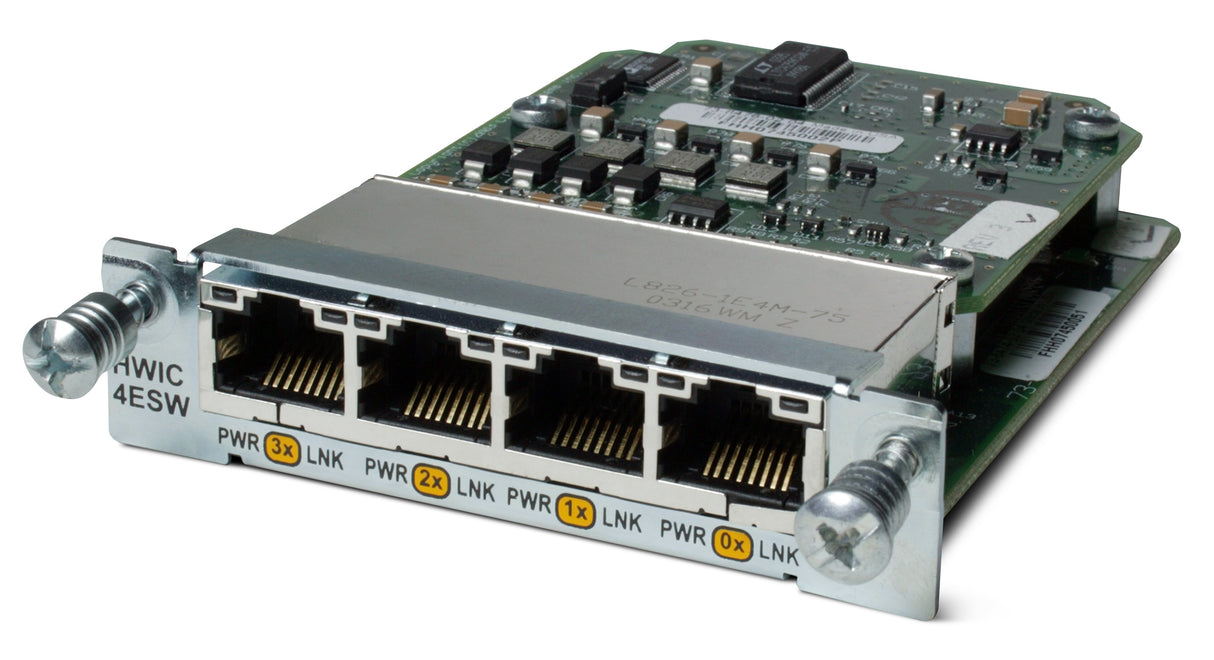Cisco 4-port 10/100 Ethernet switch HWIC-4ESW
Verzendinformatie
Verzendinformatie
Onderdelen voor 16:00 besteld worden de zelfde dag nog verzonden.
Servers worden binnen 1 tot 5 werkdagen verzonden. Onze servers worden per order opgebouwd, ge-update en getest voordat ze verzonden worden.
Retour beleid
Retour beleid
Product besteld wat niet voldoet aan de verwachting, niet werkt voor het doel dat u voorogen heeft? Binnen 14dagen kunt u de producten retour sturen en zal het volledige aankoop bedrag (incl verzendkosten) gecrediteerd worden!
Garantie
Garantie
Bij ServerLama staan we voor kwaliteit en duurzaamheid, ook ná de aankoop. Daarom bieden we op onze producten ruime garantievoorwaarden, zodat je met een gerust hart kunt bouwen aan jouw IT-infrastructuur.
- Servers: 2 Jaar volledige garantie (RtB = Return to Base), daarna levenslang op onderzoekskosten
- Parts: 1 Jaar garantie (RtB + Fair Use)
- Switches & PDU's: 2 Jaar volledige garantie (RtB)
The 4- and 9-port Cisco® EtherSwitch® 10/100 high-speed WAN interface cards (HWICs) supported on the Cisco 1800 (modular)/1941, Cisco 2800/2900, and Cisco 3800/3900 series integrated services routers offer small-to-large-size businesses and enterprise branch office customers the option to integrate switching and routing in one device. This combination offers ease of configuration, deployment, and management while using the powerful characteristics of Cisco routing and Cisco Catalyst® switching features.
Features and Benefits
Betaling & Veiligheid
Veilig en gemakkelijk betalen bij ServerLama
Bij ons kun je zorgeloos betalen via iDEAL, creditcard, bankoverschrijving, Klarna, SEPA en nog veel meer opties dankzij onze partner Mollie. Welke betaalmethode je ook kiest, je transactie is altijd veilig en betrouwbaar. Kies wat voor jou het beste werkt!
Creditcard gegevens:
Uw betalingsinformatie wordt veilig verwerkt. Wij slaan geen creditcardgegevens op en hebben geen toegang tot uw creditcardinformatie.



